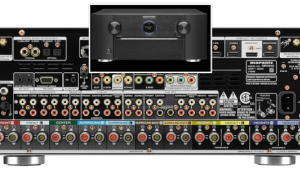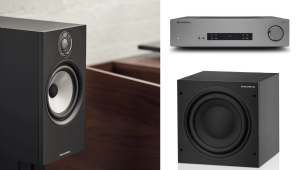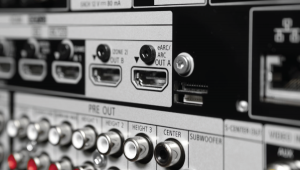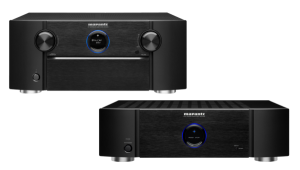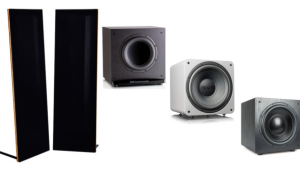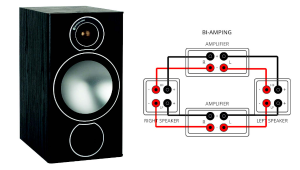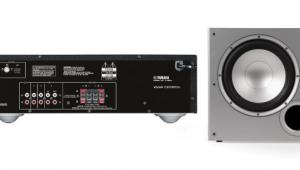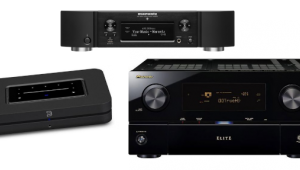Panny Plasmas, Maggie Speakers, 3D Headaches

Love your segment on The Tech Guy radio show and your podcasts. I'm thinking about buying a 50- or 55-inch plasma or LCD. I heard you mention that the Panasonic plasmas have rising black levels. Do you know if the 2010 Panasonic TC-P50G25 or TC-P50VT25 have the same issue, or have they fixed it? I watched some of the interviews from CES, and the Panasonic people said that their 2010 models are based on Pioneer Kuro technology.
I'm also looking at the LG 55LE8500. What would you recommend between the TC-P50G25, TC-P50VT25, or the 55LE8500?
Ric Takahashi
Thanks for the kind words! I recently spoke about Kuro technology with a Panasonic VP, who said the company had hired many plasma engineers from Pioneer, so the technology would naturally be incorporated into Panasonic plasmas. However, it will take a couple of years to appear in consumer products due to development and manufacturing lead times. Tom Norton is reviewing the TC-P50G20, and the black level he measured isn't bad—0.008fL—but that's eight times higher than Kuro black. (The G25 is nearly identical to the G20 with some additional online features.)
As for rising black levels, we hope to hang onto the G20 for several months, during which we will run it 24/7 in an attempt to exceed 1000 hours of use. We will be measuring the black level periodically to see if it rises as many have reported with 2008 and 2009 models.
We haven't seen the VT25 yet, so I can't comment on its performance. The VT25's claim to fame is its 3D capability, so if you want that, it's one of the only games in town, along with the Samsung C7000 and C8000 LED-edgelit LCDs. Of course, there's not much 3D content yet, but that will increase over the next year or so, as will the number of 3D displays. Also, you need a 3D Blu-ray player to watch 3D Blu-rays, which will start to appear this year.
The LG LE8500 is a superb LED-backlit LCD TV that I highly recommend. The only problem I saw was in the starfield that opens Stargate: Continuum, in which the stars had distinct halos due to the relatively large backlight zones. But it looks great otherwise, and it has the best off-axis performance of any LCD TV I've seen.
Maggie May
I am putting together a home-theater setup using Magnapans all around, and I want to do it right! My question is this: Would an amplifier like the 400-watt Parasound Halo A 51 be a good match for a Maggie package using the new 1.7s as the fronts? Could the 225W Halo A 52 do the job as well?
Rick Gigstad
The question of how much power is best for a given speaker can't be answered adequately without taking into account many factors, such as room size and, most importantly, your personal preferences. Magnepan doesn't even specify a recommended power range for the 1.7, saying in its FAQ, "The most reliable way to answer this question for your particular needs is by visiting a dealer. If you listen to your music at your normal volume, in a room that is approximately the same size as your room, with an amplifier similar to what you plan to use, an accurate power requirement can be determined for your listening habits. The amplifier used in this test should have a similar 4-ohm rating as the amplifier you plan to use at home, but it is not necessary for it to be identical to your amplifier."
As for the Parasound amps, I don't have experience with either of the models you cite, but I have no doubt they are both excellent. See UAV's review of the A 51.
3D TV Not For Me
I just had my first experience with a 3D TV. I went into Harvey Norman, Australia's largest big-box store, and tried out a Samsung model. Even though Monsters vs. Aliens didn't look 100-percent convincing, it was better than I was expecting. I didn't really like how the objects "in front" of the screen looked, and some of the backgrounds looked too clear, but I think that was the director's fault, not the technology.
However, I won't be getting a 3D TV. Why not? As soon as I stood up from the demo, I felt lightheaded and sick. I never feel sick after watching normal TV or playing video games, so I was very surprised to feel that way after watching the 3D TV for five minutes.
Nik
You're certainly not alone in your reaction. Samsung has issued warnings about feeling dizzy, lightheaded, even suffering seizures after watching 3D TV. I agree that, given your experience, you should not get one. Your e-mail also highlights the importance of trying before buying for anyone contemplating such a purchase.
Your other observations match mine. I, too, dislike the look of objects "in front" of the screen, which are more prone to ghosting and greater motion blur and stutter. Yet directors continue to put things in your face to emphasize the "3D-ness" of the image. I suspect this is at least partly because 3D is so new, and I hope that filmmakers will settle down as they learn more about using 3D effectively and not jut for its "wow" factor.
As I wrote about in my Ultimate 3D blog on UAV, sci-fi author Orson Scott Card agrees that having everything in focus no matter where it is along the depth axis is unnatural and one reason he hates 3D. I suspect this is more problematic with animated content, because live-action cameras can control the depth of field, so the backgrounds—and foregrounds, for that matter—can easily be out of focus if the director wants. Of course, you can't focus on things at different distances in a 3D image like you can in real life, but that's true of 2D images as well.
If you have a home-theater question, please send it to scott.wilkinson@sorc.com.
